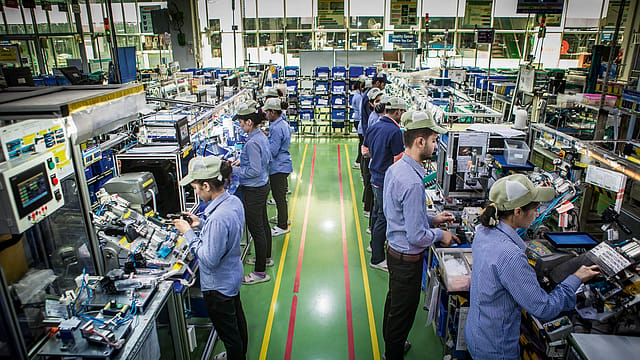India's growth stable; US, China lose momentum: OECD
ADVERTISEMENT

Economic growth in India remains stable while it is expected to lose momentum in China and the U.S., according to the Organisation for Economic Co-operation and Development.
The OECD Composite Leading Indicators (CLIs), designed to anticipate turning points in economic activity relative to trend over the next six to nine months, continue to signal growth losing momentum in most major economies and in the OECD area as a whole.
Among large OECD economies, the CLI for the United States now signals growth losing momentum, a change from last month's stable growth indication.
In the United Kingdom, Canada and in the euro area as a whole, including Germany, France and Italy, the CLIs continue to anticipate growth losing momentum, dragged down by high inflation, low consumer confidence and declining share prices. In Japan, the CLI continues to point to stable growth.
Among major emerging-market economies, growth is expected to lose momentum in China (industrial sector) and to slow in Brazil.
"Ongoing uncertainties related to the war in Ukraine and Covid-19 are resulting in higher than usual fluctuations in the CLI components. As a result, the indicators should be interpreted with care and their magnitude should be regarded as an indication of the strength of the signal rather than as a measure of growth in economic activity," the Paris-based intergovernmental organisation says.
January 2026
Netflix, which has been in India for a decade, has successfully struck a balance between high-class premium content and pricing that attracts a range of customers. Find out how the U.S. streaming giant evolved in India, plus an exclusive interview with CEO Ted Sarandos. Also read about the Best Investments for 2026, and how rising growth and easing inflation will come in handy for finance minister Nirmala Sitharaman as she prepares Budget 2026.
The CLIs are based on a range of forward-looking indicators such as order books, confidence indicators, building permits, long-term interest rates, new car registrations, and many more. Most indicators are available up to June 2022.
India's industrial output, measured via Index of Industrial Production (IIP), increased 19.6% year-on-year during May 2022. The country's service sector activity in June was the strongest in over 11 years as demand for services improved following the retreat of pandemic restrictions, capacity expansion and a favourable economic environment.
Meanwhile, the World Bank has trimmed India's GDP growth forecast to 7.5% from 8% in the financial year 2022-23 as headwinds from rising inflation, supply chain disruptions, and geopolitical tensions offset recovery. In April, the World Bank had slashed India's GDP forecast from 8.7% to 8%.
The World Bank's FY23 GDP projection for India is still higher than the 7.2% forecast given by the Reserve Bank of India. The central bank had lowered its real GDP forecast from 7.8% to 7.2% in April.
While delivering the monetary policy statement last month, RBI governor Shaktikanta Das said the monetary policy committee has retained the real GDP growth for 2022-23 at 7.2%, with Q1 at 16.2%; Q2 at 6.2%; Q3 at 4.1%; and Q4 at 4%.
India's retail inflation, measured through Consumer Price Index (CPI), slightly moderated to 7.01% in June 2022 from 7.04% in May this year. The Reserve Bank of India had earlier hiked its inflation projection for the financial year 2022-23 to 6.7% from 5.7%.
